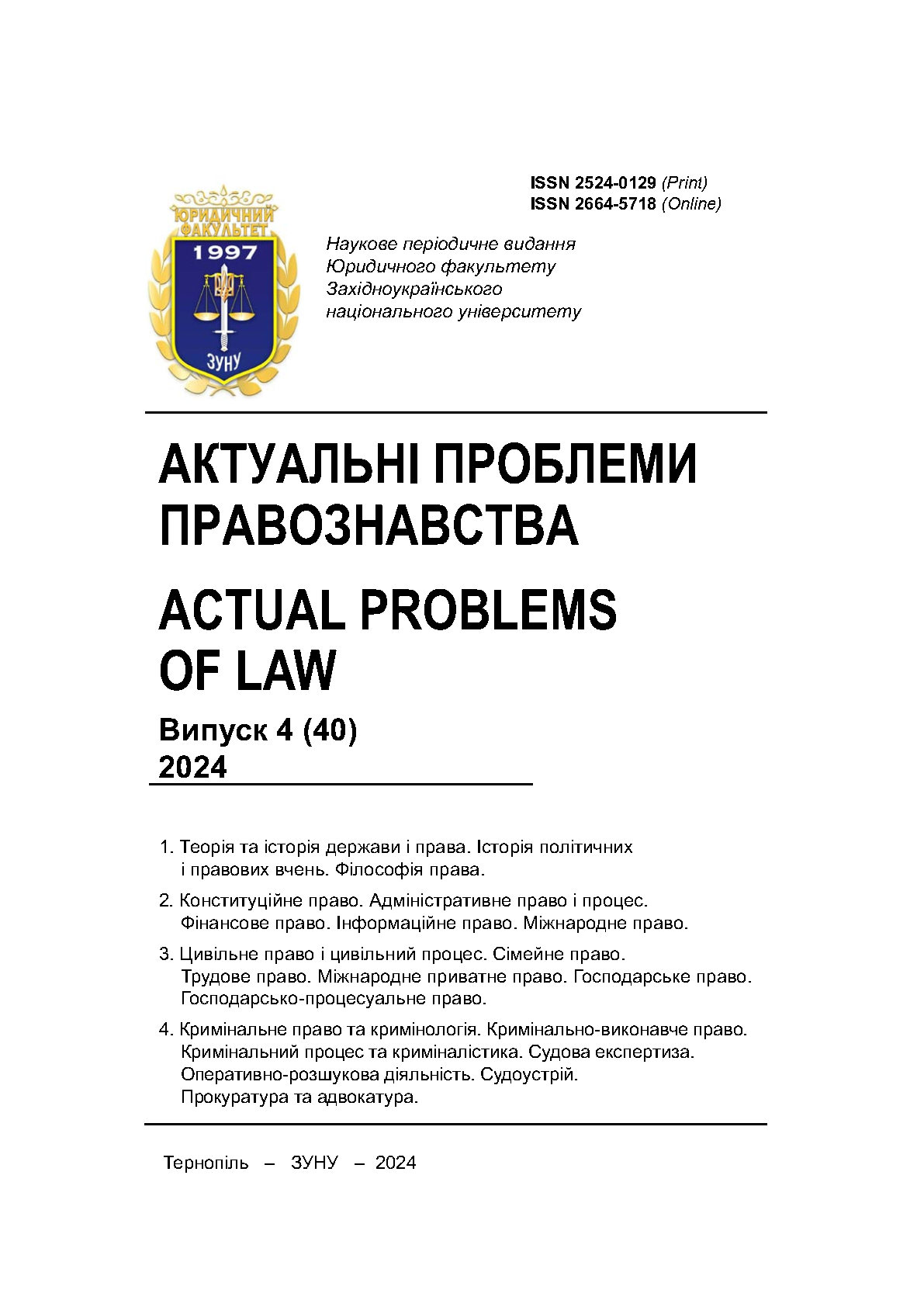Role of legislative authority in establishing democracy
DOI:
https://doi.org/10.35774/app2024.04.042Keywords:
legislature, democracy, parliament, political parties, opposition, UK, USAAbstract
The article is devoted to the study of the role and functions of the legislature in the establishment of democracy. The experience of functioning of classical parliamentary democracies in the United States and the United Kingdom is analyzed.
The author concludes that the legislature is a necessary element of democratic governance in complex societies of the modern world. Legislatures are a permanent and independent link between the population and the government. Through elections, petitions, lobbying, and participation in political parties and interest groups, citizens can express their will and influence the outcome of the legislative process.
Some common features of a well-developed legislature include a division of labor, a leadership structure, a seniority system, and a committee system. Different legislatures possess these features to varying degrees. An interesting trend that legislative scholars have noted in recent years is the apparent convergence of legislatures around the world. At the same time, in states with a long tradition of democracy, individual legislatures retain distinctive characteristics related to the history, culture, and character of the citizens they represent. It is important to remember that while legislatures play a crucial role in a democracy, they should not dominate the government. They are large and sometimes unwieldy, their membership spans many interests, and their complex internal organization does not often lend itself to quick and decisive action. Ultimately, the most important task of the legislature in a democracy is to confer legitimacy on the government by ensuring that citizens are represented.
References
Oxford Dictionary. Retrieved from https://dictionary.cambridge.org/uk/dictionary/english/oxford [in English]
ODIHR Brief: Guiding Principles of Democratic Lawmaking and Better Laws (2023). Published by the OSCE Office for Democratic Institutions and Human Rights (ODIHR). Warsaw [in English]
Strengthening Legislative Capacity in Legislative-Executive Relations (2000). Legislative Research Series, 6 [in English]
Fish, M. (2006). Steven. Stronger legislatures, stronger democracies. Journal of Democracy, 17(1), 2-20 [in English]
Wiebrecht, F. (2022). The black box of authoritarian legislatures. The Loop. Retrieved from https://theloop.ecpr.eu/the-black-box-of-authoritarian-legislatures/ [in English]
Pohorielova, Z. O. (2021). Parlamentaryzm, narodnyi suverenitet i zakonodavcha vlada: problemy vzaiemozviazkiv [Parliamentarism, popular sovereignty and legislative power: problems of interrelationships]. Naukovyi visnyk Uzhhorodskoho natsionalnoho universytetu. Seriia PRAVO - Scientific Bulletin of Uzhhorod National University, LAW Series, 65, 31-37 [in Ukrainian]
Hodges, D. C. (2020). Political Democracy: Its Informal Content. The American Journal of Economics and Sociology, 24(1), 9-20. ULR: https://onlinelibrary.wiley.com/doi/abs/10.1111/j.1536-7150.1965.tb02887 [in English]
Separation of powers and functioning democracy. The Parliamentarian: 2023 Issue Four: Separation of powers between Parliament, Executive & Judiciary, 2023. Retrieved from https://issuu.com/theparliamentarian/docs/parl2023 iss4finalonline_single_reduced/s/40293962 [in English]
Cheibub, J. A. (2006). Presidentialism, Parliamentarism, and Democracy. Cambridge University Press. [in English]
Lijphart, A. (2008). Thinking About Democracy: Power Sharing and Majority Rule in Theory and Practice. New ed Routledge [in English]
Loughlin M. In Defence of Staatslehre. Der Staat. Berlin: Duncker und Humblot, 2009. 48 (1). pp. 1-28. [in English]
Kotia, E. (2011). The Principle and Reality of Legislative Oversight in Defence Matters in Liberal Democracies: An Empirical Case [in English]
Nijzink, L., Mozaffar, S. & Azevedo, E. (2006). Can Parliaments Enhance the Quality of Democracy on the Continent? An Analysis of the Institutional Capacity and Public Perceptions, 27 CSSR 8 [in English]





